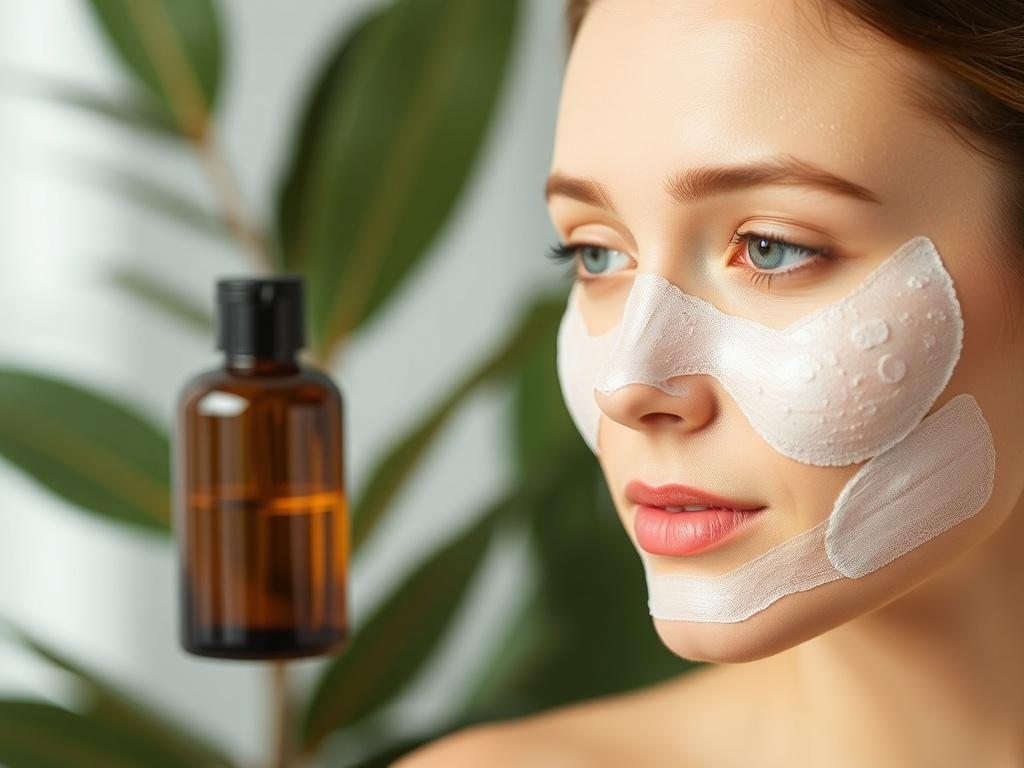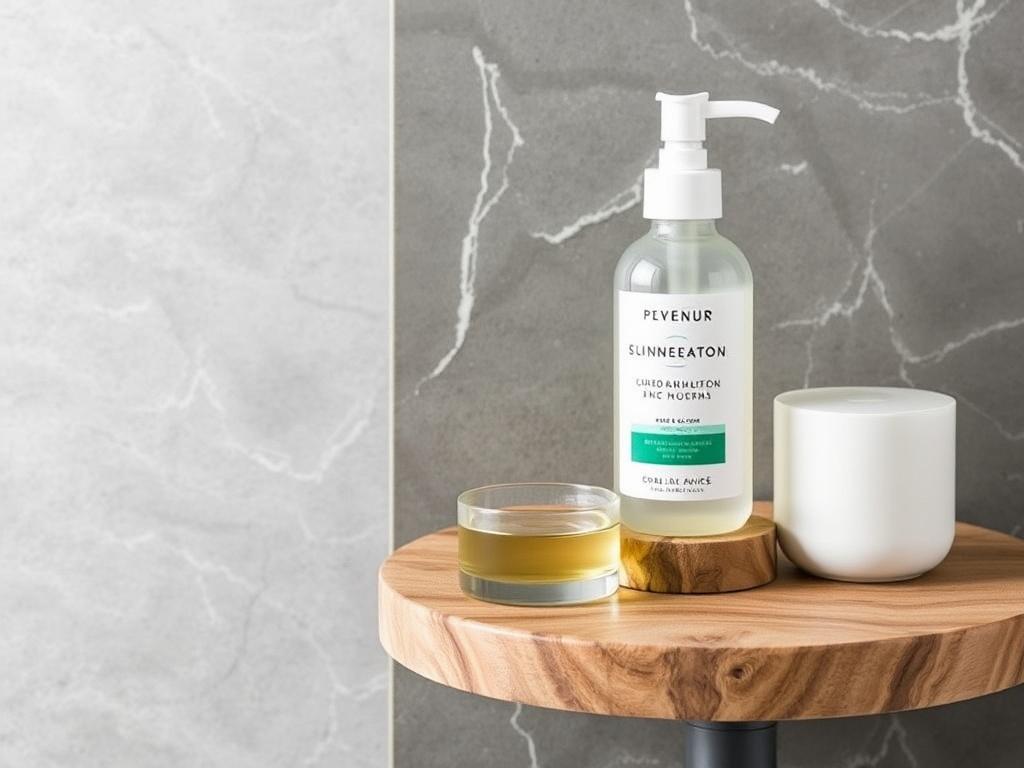Содержание статьи
- 1 What is pH Balance in Skincare?
- 2 The Skin’s Acid Mantle: Guardian of Healthy Skin
- 3 How Does pH Affect Different Skin Types?
- 4 Common Skincare Ingredients and Their pH Levels
- 5 How to Test Your Skin’s pH at Home
- 6 Tips for Maintaining Healthy pH Balance in Skincare
- 7 The Role of pH in Addressing Common Skin Concerns
- 8 Common Myths About pH and Skincare
- 9 How Industry Is Adapting to pH Awareness
- 10 Final Thoughts on pH Balance and Skincare
- 11 Conclusion
When it comes to skincare, many of us focus on ingredients, moisturizing, and sun protection, but one crucial factor often goes unnoticed: pH balance. Understanding the pH level of your skin and of the products you use can make a tremendous difference in how your skin looks and feels. The importance of pH balance in skincare goes beyond just marketing jargon—it’s a key aspect of maintaining healthy, radiant skin. In this article, we’ll dive deep into what pH balance means, why it matters, and how you can ensure your skin stays in optimum condition by managing pH levels effectively.
What is pH Balance in Skincare?
Before exploring why pH balance is important, let’s break down what pH means in the context of skincare. pH stands for ‘potential of hydrogen,’ and it measures how acidic or alkaline a substance is on a scale from 0 to 14. A pH of 7 is neutral, anything below 7 is acidic, and anything above 7 is alkaline.
Our skin naturally has a slightly acidic pH level, typically ranging between 4.5 and 5.5. This acidity forms what is known as the skin’s acid mantle—a thin protective layer composed of oils and sweat that helps defend against harmful bacteria, pollutants, and other irritants. The acid mantle also plays a vital role in maintaining the skin’s moisture barrier.
Why Is Skin’s pH Slightly Acidic?
This slightly acidic environment may sound surprising when compared to neutral pH, but it is essential for the skin’s health. A balanced acidic pH supports the growth of good bacteria while keeping harmful microorganisms at bay. It also influences the function of enzymes responsible for producing natural moisturizing factors that keep skin hydrated.
If the skin’s pH shifts too far in either direction—becoming too acidic or too alkaline—this protective balance can be disrupted, leading to dryness, irritation, or breakouts. Therefore, the importance of pH balance in skincare cannot be overstated.
The Skin’s Acid Mantle: Guardian of Healthy Skin
The skin’s acid mantle acts like an invisible shield, locking in moisture and protecting against environmental damage. When intact, it ensures that your skin remains supple and resilient. The acid mantle also regulates the skin’s microbiome—the diverse community of bacteria living on the skin surface—which is vital for skin immunity.
Disturbing this balance through harsh cleansers, over-exfoliation, or using products with incorrect pH levels can cause the acid mantle to break down. This makes your skin vulnerable to infections, excessive dryness, and sensitivity.
Factors That Can Disrupt Your Skin’s pH Balance
- Harsh skincare products with high alkalinity, such as traditional soaps or detergents
- Over-cleansing or washing too frequently
- Environmental stressors like pollution or extreme weather
- Using skincare products that don’t match your skin’s natural pH
- Medical conditions such as eczema or acne
If you’ve ever experienced redness, stinging, or itching following product use, it could be your skin’s pH telling you it’s unhappy. The good news is that understanding and managing pH balance can help restore skin health.
How Does pH Affect Different Skin Types?
Everyone’s skin is unique, and the way pH impacts it varies based on skin type. Let’s take a look at how pH balance interacts with various skin types and conditions.
| Skin Type | Typical pH Behavior | pH-Related Concerns | Recommended pH Range for Products |
|---|---|---|---|
| Normal Skin | Maintains pH between 4.5 – 5.5 | Generally balanced, but can become sensitive to harsh products | 4.5 – 5.5 |
| Oily Skin | May have slightly lower pH due to excess sebum | Breakouts, clogged pores; alkaline products can worsen issues | 4.5 – 5.5 |
| Dry Skin | Prone to higher pH due to compromised barrier | Excessive dryness, irritation, flaking | 4.0 – 5.0 |
| Sensitive Skin | Tends to have disrupted pH and weakened barrier | Easily irritated, redness, stinging | 4.0 – 5.0 (mild, balanced products) |
| Acne-Prone Skin | Often higher pH, promoting bacteria proliferation | Inflammation, pimples, blackheads | 4.0 – 5.5 (products that maintain acidity) |
Choosing the Right pH Skincare Products
When selecting skincare products, it’s important to choose those formulated within your skin’s natural pH range to maintain or restore the acid mantle. Products that are too alkaline can strip away natural oils, while overly acidic products might cause irritation, especially for sensitive skin. Maintaining this balance keeps the skin’s microbiome healthy and controls oil production effectively.
Common Skincare Ingredients and Their pH Levels

Understanding the pH of common skincare ingredients helps you make informed decisions about what to put on your skin. Here’s a quick rundown:
| Ingredient | Typical pH | Impact on Skin |
|---|---|---|
| Alpha Hydroxy Acids (AHAs) like Glycolic Acid | 3.0 – 4.0 | Exfoliates dead skin cells, improves texture; acidic pH aids effectiveness |
| Beta Hydroxy Acid (Salicylic Acid) | 3.0 – 4.0 | Penetrates pores, prevents acne; acidic pH supports exfoliation |
| Sodium Lauryl Sulfate (SLS) in cleansers | 9.0 – 11.0 (alkaline) | Strong detergent; can disrupt acid mantle, cause dryness |
| Hyaluronic Acid | 5.0 – 7.0 | Hydrating; generally pH neutral to slightly acidic, gentle on skin |
| Niacinamide | 5.0 – 7.0 | Brightens, improves barrier function; pH compatible with skin |
By selecting products with ingredients that support your skin’s natural pH, you improve their efficacy while minimizing irritation.
How to Test Your Skin’s pH at Home
Curious about your own skin’s pH? While dermatologists use precise instruments to measure skin pH, there are simple tests you can try at home that give a ballpark idea:
- Purchase pH testing strips designed for skin use. These can be found online or at health stores.
- Cleanse your face with a gentle, pH balanced cleanser and pat dry.
- Touch the pH strip to your cheeks or forehead for a few seconds and compare the color change to the provided chart.
Keep in mind that skin pH can vary throughout the day, influenced by sweat, environment, and product use. While at-home tests aren’t 100% accurate, they can guide your understanding of your skin’s balance.
Tips for Maintaining Healthy pH Balance in Skincare

Incorporating pH-awareness into your daily routine is easier than you think. Here are some practical steps to keep your skin’s pH in check:
- Use gentle, pH-balanced cleansers. Avoid soaps with high alkalinity that strip natural oils.
- Limit over-cleansing. Washing your face twice daily is generally sufficient; too often can disturb pH and cause dryness.
- Incorporate toners or essences with balanced pH. These products can help restore the skin’s acid mantle after cleansing.
- Be cautious with exfoliation. Overuse of acidic exfoliants or scrubs can disrupt pH and irritate skin.
- Choose moisturizer suited to your skin type. Hydration supports the acid mantle and barrier recovery.
- Patch test new products. This helps to avoid reactions caused by inappropriate pH or sensitivity.
The Role of pH in Addressing Common Skin Concerns
Maintaining pH balance isn’t just about preventing irritation—it can play a central role in managing skin problems such as acne, eczema, rosacea, and aging.
Acne and pH Balance
Acne-prone skin often experiences a higher (more alkaline) pH, which encourages the growth of acne-causing bacteria. Using pH balanced products can help reduce bacterial proliferation and inflammation, making acne treatments more effective.
Eczema and Sensitive Skin
Conditions like eczema can disrupt the skin’s acid mantle, increasing pH and weakening the barrier. Gentle, acidity-restoring skincare soothes flare-ups and helps repair the skin.
Anti-Aging and pH
Some anti-aging ingredients, especially acids, work best at specific pH levels to promote collagen production and skin renewal. Using products at the right pH maximizes these benefits without unwanted irritation.
Common Myths About pH and Skincare
Despite the growing attention to pH in skincare, several myths persist. Let’s clear up a few:
- Myth: Soaps are always bad because they are alkaline.
Fact: Some soaps are formulated to be pH balanced and do not disrupt the skin. - Myth: The lower the pH in a cleanser, the better.
Fact: Extremely low pH can cause irritation; ideal pH matches skin’s natural acidity. - Myth: You need to balance your skin’s pH after every wash with toner.
Fact: Toner isn’t always necessary if you use a pH balanced cleanser, but it can help some skin types.
How Industry Is Adapting to pH Awareness
Thanks to increased understanding of the importance of pH balance in skincare, many brands are formulating products with precise pH values to support skin health. This trend is encouraging because it pushes innovation toward gentle, effective ingredients while avoiding irritants.
Consumers are also becoming more educated, seeking skincare lines that explicitly state pH levels or label themselves as ‘pH balanced.’ This transparency helps people make better choices for their skin’s long-term well-being.
Final Thoughts on pH Balance and Skincare

The importance of pH balance in skincare is a vital topic for anyone wanting to maintain healthy, glowing skin. By understanding how pH affects your skin’s barrier and microbiome, and by choosing the right products and routines to support this delicate balance, you can protect your skin from damage and enhance its natural beauty. Whether you are dealing with dryness, sensitivity, acne, or just want to promote overall skin health, paying attention to pH can make a significant difference. Incorporate this knowledge into your daily regimen, experiment carefully, and listen to your skin’s responses; this mindful approach will help you unlock the best version of your skin.
Conclusion
In the world of skincare, the importance of pH balance is often underestimated but truly foundational for skin health. The skin’s naturally acidic pH not only protects against external irritants and harmful bacteria but also ensures proper hydration and barrier function. Disrupting this balance can lead to myriad skin issues, including dryness, irritation, and acne. By choosing skincare products that respect your skin’s natural pH, limiting harsh cleansers, and employing gentle routines, you nurture your skin’s acid mantle, enabling it to function optimally. Remember, healthy skin isn’t just about the ingredients but also about maintaining the right environment for those ingredients to work effectively. With a little attention to pH, you can enjoy clearer, softer, and more radiant skin every day.

